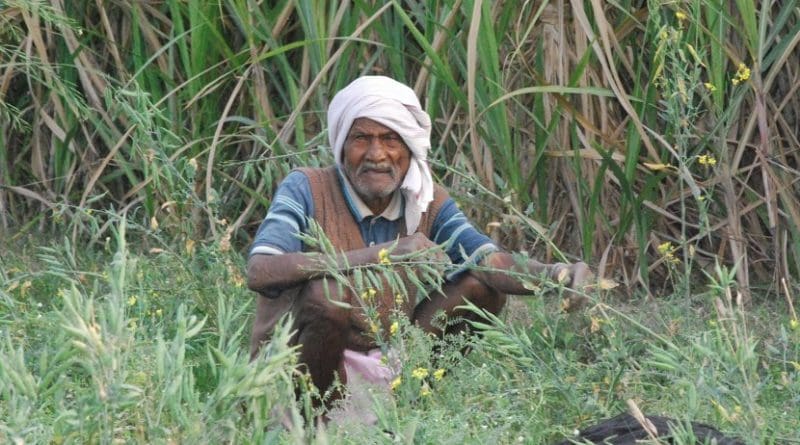Disability Among India’s Elderly Much Higher Than Census Estimates
New estimates of disability among India’s elderly population, based on the ability to carry out three basic living activities – walking, dressing, and toileting – show that the scale of the problem is much larger than suggested by the Indian national census.
A new paper coauthored by IIASA researcher Nandita Saikia found that 17.91% of males and 26.21% of females aged 60 and above, experience disability in these areas, equating to 9m elderly men and 14m elderly women. The most recent census, from 2011, suggests that just 5% of the elderly population suffer from a disability. The prevalence of disability is much higher among widowed women, and among the poor and illiterate.
Saikia and Mukesh Parmar from Jawaharlal Nehru University also found a statistically significant connection between chronic morbidity, or long-term health conditions, and disability. They studied three such conditions – diabetes, high blood pressure, and heart disease. Diabetes had the highest correlation to disability, followed by high blood pressure and heart disease.
“We found that the likelihood of disability is always the highest among diabetes patients, whereas the disability rate is the lowest among elderly persons with heart disease. This may be due to high mortality among heart patients,” says Saikia. “Diabetes patients, on the other hand, may live for longer periods with disability. These results are helpful for both patients and healthcare providers in terms of taking preventive measures at the onset of morbidities.”
Previous studies of morbidity and disability in India were carried out using primary sample surveys, limiting them to small areas of India with a small sample size. They can therefore not be used to gain a generalized picture across the whole nation, as India is so large and varied. In addition, they tend to focus on the association between a specific type of morbidity and a specific disability, so cannot give a broader picture.
Saikia and Parmar took a different approach to cover the whole country and give a broad picture for the first time. They used data from the second round of the Indian Human Development Survey which was carried out by the University of Maryland, US, and the National Council of Applied Economic Research, India. This was a survey covering more than 42,000 households across India, selected using a stratified random sampling technique, and covered various topics including health, employment, economy, and education. The second round of the survey also included questions about chronic morbidity and disability.
The researchers defined disability as difficulty or inability to perform three specific activities of daily living- walking 1 km, going to the toilet without help, and dressing without help, and looked at the data for people aged over 60. In the survey, respondents could answer “no difficulty”, “can do with difficulty”, and “unable to do it”. Each answer was assigned a score, which allowed Saikia and Parmar to calculate what is known as the Katz Index of Independence, which takes into account multiple disabilities. As the survey also asked questions about long-term health conditions, the researchers were able to connect the disabilities to specific conditions.
The researchers say that acting in a timely way to address chronic morbidity will help to minimize the huge associated burden of disability.
“Due to improved socioeconomic conditions, there is a steady increase in life expectancy and consequently aging among Indians. However, this may not translate into a healthy aging, particularly when they suffer chronic diseases like diabetes. In order to prepare for a healthy old age, a social environment should be created for early detection and postponing the onset of morbidity as the later stages of life approaches, by focusing on a healthy lifestyle from the beginning of adulthood,” says Saikia.
She adds that policymakers should look at ways to promote healthy lifestyles among India’s adult population, such as providing sufficient transport and infrastructure, increasing taxes on tobacco and alcohol, and raising awareness of the benefits of healthy diets and physical activity. The government should also consider offering more assistance to families with elderly members, particularly as family structures and society values change. All stakeholders, including the government, community health workers, and society as a whole must be involved.

